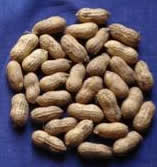 |
|||
| Organic Farming :: Organic Farming Practices | |||
SEED
When pods are shelled long before sowing, they are liable to suffer from loss of viability rapidly and damage due to pests, etc. Small, shrivelled and diseased kernels should be discarded and only bold seeds should be used for purposes of seed. Seed rate The seed rate is an important criterion for an optimum plant population in the field and to achieve good yields. It depends on the variety cultivated. Semi-spreading and spreading varieties require 110 kg/ha while bunch varieties require 120 kg/ha. Treatment Before sowing, the seeds can be smeared with lime solution. The heat produced by the lime solution enhances germination. Seed treatment with asafoetida solution helps to protect the crop from blight. Asafoetida solution is prepared by mixing 250 gm of asafoetida in two litres of water. This quantity is sufficient for treating twenty kilo of seeds. The seeds should be soaked in this solution for twelve hours before sowing. Inoculation of seed with efficient strains of nitrogen-fixing bacteria is necessary for areas where groundnut is not generally grown. Seed inoculation with three packets (600 gm) of rhizobium per hectare is recommended. Bio-control agents like Trichoderma viride @ 4 gm/kg of seed or Pseudomonas fluorescens @10 gm/kg of seed can also be used for seed treatment. In addition, groundnut seed can also be treated with amrut pani/panchagavya/cow pat pit or jeevamrut. Source : Centre for Indian Knowledge Systems, Chennai Updated on : Dec 2014 |
|||
© 2009-16 TNAU. All Rights Reserved. |

